St. Augustine, Florida provided a picturesque backdrop for the inaugural Network for Engineering With Nature (N-EWN) 2024 Partner Symposium from May 22 to 24, which brought together 170 members from 28 network partners from across the country to forge deeper connections while learning about one another’s work to implement nature-based solutions or “actions to protect, sustainably manage, or restore natural or modified ecosystems to address societal challenges, simultaneously providing benefits for people and the environment.”
“We like to get together with all the different groups and reflect on experiences they’ve had, what they’ve done well, and what they’ve learned so that we can apply it to our projects and then likewise we share with them,” said Josh Running, principal and U.S. technical lead for Stantec’s Ecosystem Restoration Program. “It’s important in today’s world that we move fast and put good stuff in the ground given the climate risk that we’re dealing with right now, so that’s probably my favorite part about coming here.”
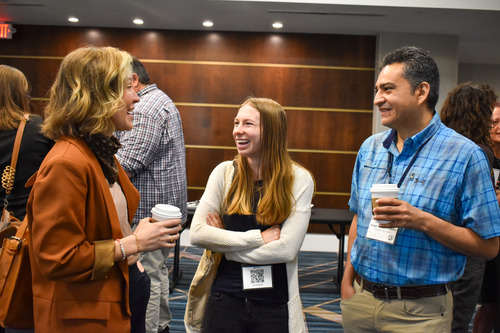
Attendees shared their experiences and progress being made in the nature-based solutions space across sectors, and explored how partners can collaborate on a broad scale to accelerate adoption and integration of nature-based with traditional infrastructure approaches to ensure the future resiliency of communities, economies and the environment throughout the United States.
“The amazing thing is we have people with expertise in science, planning, engineering, economics, etc. that are ready to partner up and get this done,” said Chris Levitz, AECOM practice lead for coastal and riverine resilience. “…So let’s all find a path to make NBS commonplace instead of the exception, and to make sure that it isn’t simply adding plants to a project, but instead leveraging the natural system for its ability to make our communities, environment, and economy more resilient.”
Hosted by the UF Center for Coastal Solutions, the jam-packed event featured a variety of activities designed to build connections, project-oriented talks, deep dive panels, and a poster session on nature-based research and ‘in the ground’ projects, capped by a rooftop reception overlooking the water on all sides. Following the symposium, working groups and the executive committee dedicated time to mapping out next steps for the network’s growth and priorities.
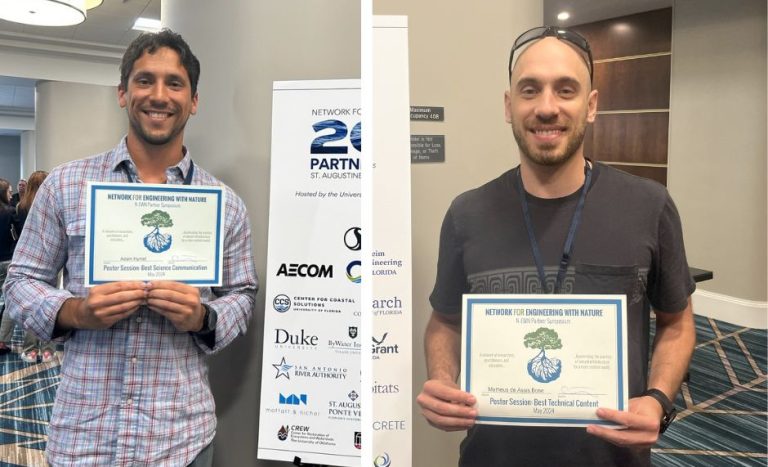
“This is our chance to turn gaps in knowledge into opportunities for advancement,” said Amanda Tritinger, deputy program manager for the US Army Corps of Engineering with Nature® program.
Guided field trips to local research and project sites gave participants a close look at nature-based or green infrastructure initiatives for restoring dunes, protecting marshes, and building resilience in coastal areas. The excursions included a visit to a local barrier island and exploration of the Guana River Marsh’s aquatic preserve, as well as a pontoon boat ride to tour the field experiment sites of the UF Center for Coastal Solutions. Others walked to nearby dunes with a taste of policy and hurricane history on the side or took a guided walking tour of downtown St. Augustine’s resilience projects.
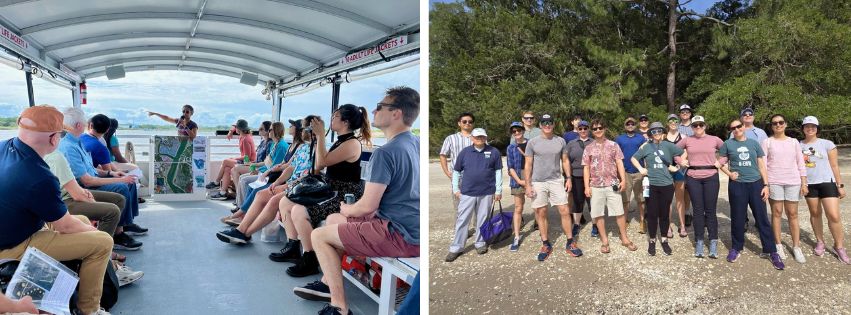
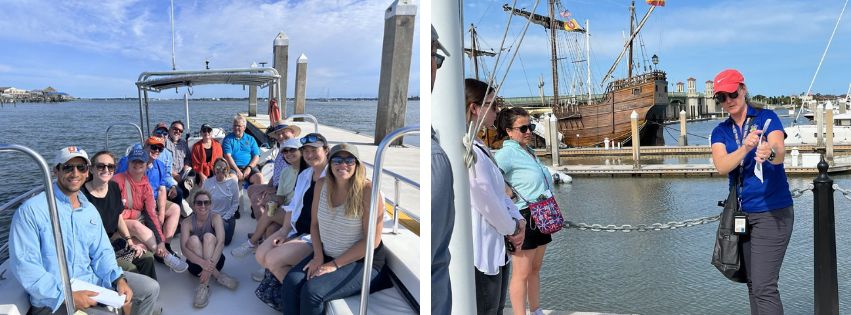
Thank you to our sponsors
A huge thank you to our sponsors: Stantec, AECOM, Center for Coastal Climate Solutions | UC Santa Cruz, UF Center for Coastal Solutions, UF Herbert Wertheim College of Engineering, Gallogly College of Engineering – the University of Oklahoma, UF Research, UF College of Liberal Arts and Sciences, Duke University, ByWater Institute – Tulane University, University of Arkansas, Sea Grant Florida, San Antonio River Authority, CASCADE – ASU Center for Assured and SCAlable Data Engineering, Biohabitats, Moffatt and Nichol, St. Augustine & Ponte Vedra VCB, Anchor QEA, ECOncrete, Center for Restoration of Ecosystems and Watersheds (CREW) – The University of Oklahoma, Institute for Resilient Infrastructure Systems – University of Georgia and Limnotech. A heartfelt thanks to the planning team for all their hard work over the last year to make this a reality, especially CCS project manager Sharlynn Sweeney for her leadership and exquisite attention to detail, which ensured everything came off without a hitch.
Heard in the halls
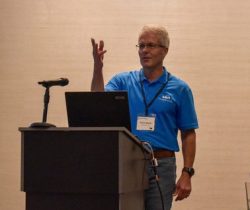
“I’m most excited for three things: making new connections with fellow N-EWN partners, learning about what’s going on with N-EWN and what we can do as an organization to support the other organizations in the N-EWN.”– Chris Mack, senior coastal engineer at Moffatt and Nichol
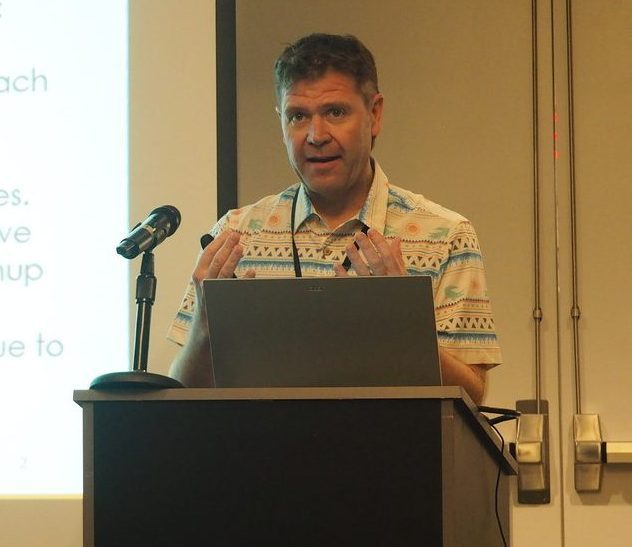
“I’ve got something to learn from every single poster and presentation and I’m looking forward to seeing how this whole network can evolve.”
– Pete Adams, Ph.D., associate professor of the University of Florida Department of Geological Sciences
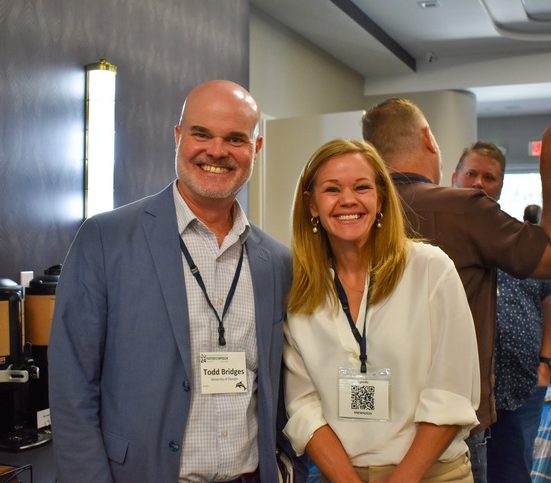
“I love getting to have personal interactions and meeting the faces of the people that I email all the time. I like getting to build a relationship with them and being in the same room is the best way to do it.”
– Courtney Chambers, communications lead at USACE ERDC
—
By Sharon Ryan
